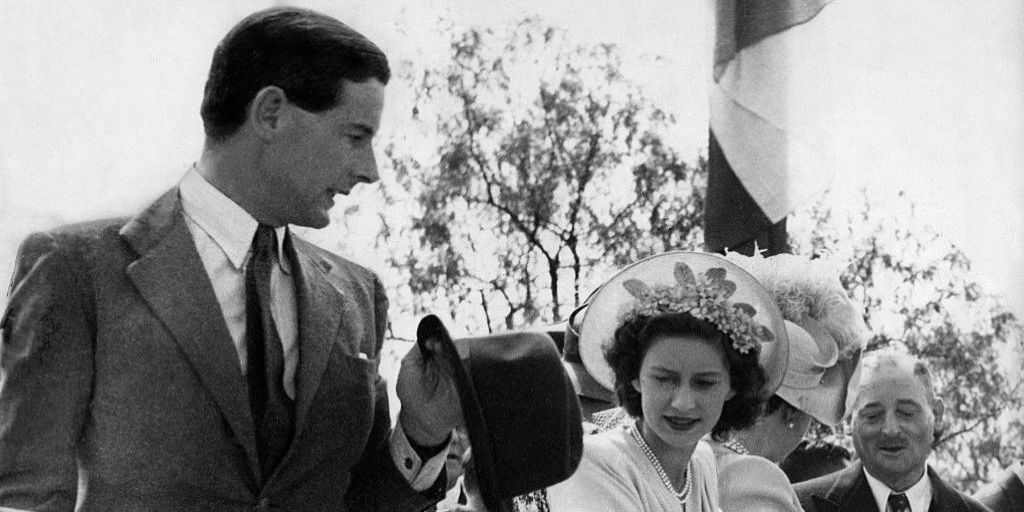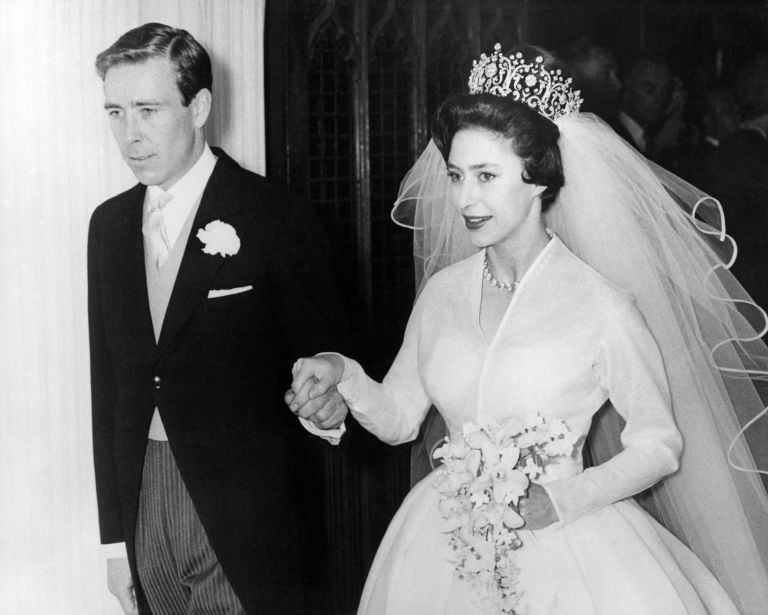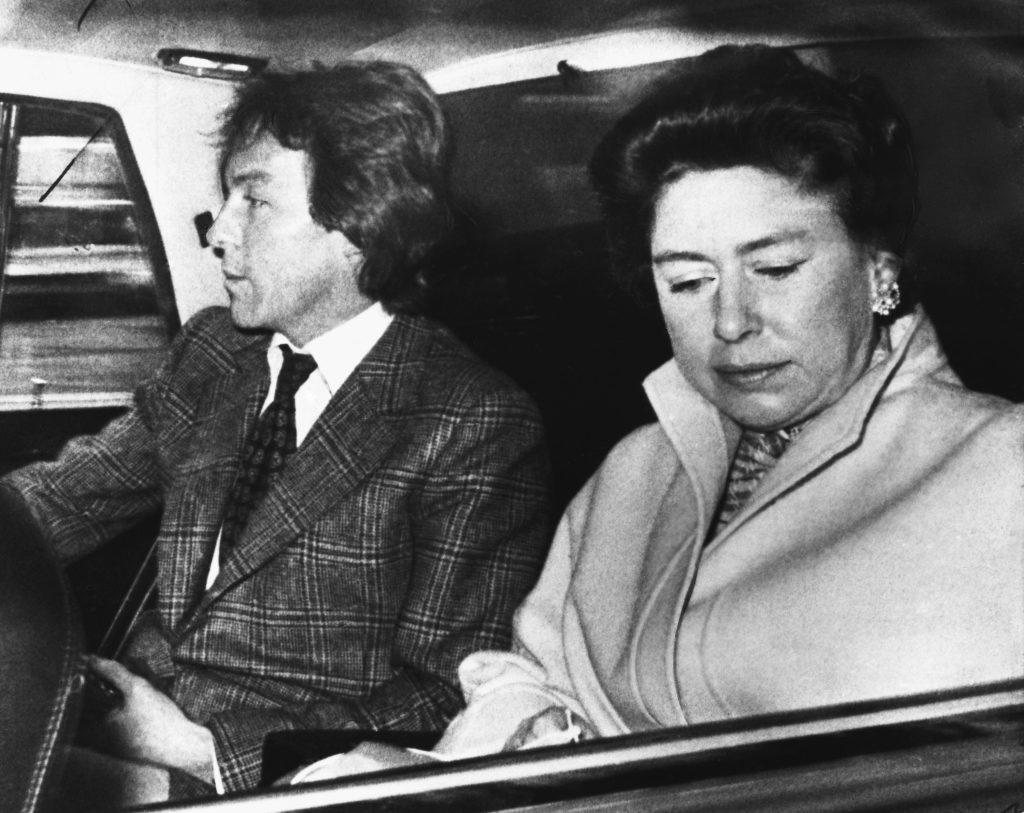Despite their stark differences, Queen Elizabeth and Princess Margaret had a “primal kinship.”
When a twist of fate made these small aristocrats the heir and the spare, Lilibet was ten and Margaret was six.
By status, the sisters should have lived a lavish life on the outskirts of the royal family, similar to that of princesses Beatrice and Eugenie today.
However, their childless uncle abdicated the monarchy on December 11, 1936, sending them hurtling towards their new fate.
Lilibet would go on to become Queen Elizabeth II, the longest-reigning queen in British history and one of history’s most significant ladies.
Margaret, a bright-eyed young woman who craved attention, would live the rest of her life in her sister’s shadow.
They might have fallen out because of their differences. The crown might have divided them, just like it has so many other royal siblings throughout history.
But as noted by historian Andrew Morton, these ladies had a “primal relationship.”
He stated in Elizabeth and Margaret: The Intimate World of the Windsor Sisters that Margaret was her sister’s “alter ego.”
Elizabeth and Margaret battled each other throughout their lives as the sensible older sister and the naughty, obstinate younger sister.
But a tragic romance, a looming constitutional crisis, and a spate of scandals would put their loyalty to the test.
Two Very Different Women
The House of Windsor frequently produces an obedient, traditional heir who is followed by a charming, slightly perilous sibling.
“Andrew the fool versus Charles the patient. William, who is careful, is paired with Harry, who is wild “explained Andrew Morton.
Princess Margaret claimed that she and her sister were frequently turned into fairytale figures.

The other must be the target of the most inventive ill will, the evil sister, when there are two sisters and one is the Queen, who must be the source of all honor and all that is good, she stated.
Despite having a striking physical similarity, they were very different individuals.
Elizabeth kept a precise schedule suited for a monarch every morning. After being awakened by bagpipes, she would have tea by herself before reading her mail and the official documents that needed her approval.
Her sister got out of bed at nine in the morning, chain-smoked in bed, and took a bath with the help of her ladies-in-waiting.
At midday, she went downstairs for a “vodka pick-me-up” after getting her hair and makeup done.
After that, she would go to her mother’s house for a “four-course informal lunch served from silver plates with half a bottle of wine per person, with fruit and half a dozen various sorts of native and continental cheeses.”
At state banquets and garden parties, the Queen spent decades perfecting the art of small chats with tens of thousands of guests.
However, her younger sister was more well-known for hosting wild house parties where she sang, played the piano, danced, engaged in gossip, and drank pricey Scotch.
She allegedly admitted to French filmmaker Jean Cocteau that “disobedience is my joy.”
Craig Brown, her biographer, claims that she smoked so much that she would glue a matchbook to her whisky tumbler “so that she could strike matches while drinking.”
She mingled with a group of British celebs and hipsters who took pleasure in having a princess among them.
But they also had to put up with her savage tongue.
‘The House Guest from Hell’
Margaret was known for luring people in with her charm before abruptly and without warning flinging insults.
When they first met in the 1950s, she told Grace Kelly, “Well, you don’t look like a movie star.”
She called Twiggy’s moniker “unfortunate” and called Elizabeth Taylor’s engagement diamond “vulgar.”
She also took advantage of royal customs, receiving the nickname “the house visitor from hell” from those who hosted her.
Even though she was aware that the meal could not begin until she arrived, she frequently arrived late to dinner gatherings.
Helena Bonham Carter, who was friends with the princess and portrayed her in the Netflix film The Crown, said that the princess’s short fuse and concern with rank were attempts “to control what she could.”
The actress stated, “If you have very little control in your life, you frequently wind up controlling what little that you can.
The largest difference between Margaret and her sister, though, may have been their preferences for males.
The monarchy’s future was in jeopardy as a result of Margaret’s sad love life, which almost destroyed her relationship with the Queen.
A Forbidden Romance
The royal family was anxious to steer clear of any other romantic scandals following the constitutional crisis that was caused by King Edward’s romance with divorcee Wallis Simpson.

Therefore, they moved quickly to hide the relationship when Princess Margaret revealed at the age of 22 that she had fallen in love with Peter Townsend, a divorced royal equerry 16 years her senior.
Group Captain Townsend described her as a “female of exceptional, intense beauty” who was “limited as it was in her small slim body and centered about enormous eyes, generous, sensitive lips and a complexion as smooth as a peach.”
There aren’t many pictures of the pair, and courtiers at the palace continued to promote Margaret as a youthful, single, beautiful princess.
However, a small gesture made on the day of her sister’s coronation revealed the couple’s secrecy.
When Margaret was waiting at Westminster Abbey for her carriage to take her back to Buckingham Palace, the press saw her removing some fluff off Peter Townsend’s clothing.
Two weeks after the coronation, the British press published a tale about their passion because the intimacy of the event was sufficient proof.
The tabloid tale alarmed the new Queen’s courtiers, despite the fact that she had asked the couple to give her a year to settle in before granting them permission to wed.
They gave Group Captain Townsend the go-ahead to relocate to Brussels and work as the British embassy’s air attaché.
At the time, Princess Margaret was visiting Rhodesia.
The love of her life was gone when she came back.
Read More: Queen Elizabeth Illness: She Died at the age of After a Series of Health Issues!
Margaret Must Choose: Status or Love
The issue of marriage consumed Margaret and Peter for the next three years, as well as Buckingham Palace.
The Queen supported her beloved Margaret while being concerned about the opposition of her parliament and the Church of England.
In a letter to the Commonwealth, the country’s then-prime minister Anthony Eden stated, “Her Majesty would not wish to stand in the way of her sister’s happiness.”
The Queen and Mr. Eden came up with a strategy together. Princess Margaret was able to wed her true love and maintain her royal status while doing so.
If the populace agreed, she may even carry on performing royal responsibilities, which was possible given that by 1955 people frequently yelled at Marg, “Go on, Marg, do what you want!”
There was a catch, though. She would need to get married in a civil ceremony and relinquish both her and her children’s rights to inherit.
Margaret ended her relationship with Peter Townsend permanently three days after the Queen and her prime minister made the planned final.
She added in a statement, “I have decided to place these reasons above any others. Mindful of the Church’s teaching that Christian marriage is indissoluble and cognizant of my duty to the Commonwealth.
“I am sincerely appreciative of everyone’s care and persistent prayers for my happiness,” the speaker said.
Margaret made her decision to stick by her sister’s side, regardless of whether she was being tormented by courtiers, being loyal to the crown, or losing her love.
Read More: Queen and “Flash Gordan” Connection!
Princess Margaret Meets Her Match

Margaret and Peter Townsend agreed not to get married again after they split up.
Four years later, Group Captain Townsend made a 25-year-old Belgian woman the subject of a marriage proposal.
The princess, hurt and betrayed, realized it was time to go on with her life.
She entered Westminster Abbey accompanied by 2,000 people a year after the Townsend wedding and wed Antony Armstrong-Jones.
The magazine photographer became the first commoner to marry a royal descendant in 400 years, and the Queen bestowed the title of Earl of Snowdon upon her new brother-in-law.
In her biography of the earl, Anne de Courcy stated that “the [royal family] liked him very much – Tony had great charisma, extremely good manners, and he understood exactly how to behave.”
Princess Margaret’s marriage brought about a period of stability, during which she gave birth to two children and maintained ties with her mother and sister.
So that they could talk whenever they wanted, the Queen constructed a direct phone connection from Buckingham Palace to Margaret’s apartment in Kensington Palace.
In the 1960s, the princess and Lord Snowdon mixed with intellectuals and celebrities in the heart of London high society.
However, as both the husband and the wife started having affairs, the marriage slowly began to fall apart.
The couple had such a strained relationship by the early 1970s that Lord Snowdon would smuggle insulting notes into Margaret’s possessions.
According to historian Craig Brown, “he resorted to putting foul notes on her desk, including one headed ’24 Reasons Why I Hate You,’ which greatly offended her.
“On [another occasion] a note with the words “I detest you” was slipped into her bedside book.”
Princess Margaret’s extramarital affairs in 1976, when her marriage was all but gone, led to another controversy.
She would not, however, give up her passion for the crown this time.
Related Article: Princess Eugenie’s Net Worth: How Wealthy Is Queen Elizabeth Grand Daughter?
The Terrible Final Years of Margaret
When a 43-year-old princess was having a covert marriage breakdown, Roddy Llewellyn, a 25-year-old gardener partying in Scotland, drew her attention.
They hid their relationship for a while, but eventually, a paparazzo with a long lens caught them on a Mustique beach.
Mr. Llewellyn subsequently admitted to their connection, “I didn’t think about the repercussions of having a high-profile romance.”
I was merely doing what felt right.
The relationship between a married older princess and the man they referred to as her “boy toy” outraged the British tabloids.
Margaret was referred to by lawmakers as a “parasite” and a “floozy.” But Margaret resisted giving up Roddy in spite of demands from her sister and the authorities.

Additionally, she divorced Lord Snowdon in 1978, breaking their union for good and making her the first royal since King Henry VIII to do so.
The dissident princess spent more time in Mustique with her boyfriend and made fewer appearances in front of the public.
Her second period of resembling stability, too, was brief.
After dating for eight years, Roddy Llewellyn and Margaret split in 1981.
She would vacation on tropical islands with friends and occasionally appear with her sister for the rest of her life, but otherwise, she would live alone.
Although the Windsor women are noted for their good health and longevity, Margaret started to feel the effects of a lifetime of smoking and drinking when she was in her fifties.
She had been ailing for years when she passed away peacefully from a stroke in 2002.
Elizabeth, who was renowned for her stoicism in the face of sorrow and conflict, wiped tears from her face at the funeral.
One of the rare times the Queen ever sobbed in front of people.
At the funeral, Lady Anne Glenconner, who introduced Princess Margaret to Roddy Llewellyn, made an effort to avoid running into the Queen.
The Queen found it difficult, and she admitted that she always felt bad for having introduced Roddy to Princess Margaret.
But after the service, the Queen saw her and approached her.
She expressed gratitude to Lady Anne for introducing her to Roddy, adding, “I’d just like to say, Anne, it was very difficult at times, but I appreciate you so much [for] introducing her to him because he made her extremely happy.
Margaret might have been referred to as Elizabeth’s “evil” twin and she alter her personality.
But in reality, she served only as a decorative accessory in a gold-plated machine.
She devoted her entire life to finding love and connection with men—guys she either could not have or, worse yet, men who betrayed her.
In the end, Margaret’s relationship with her sister was the longest-lasting and most important one she had.
Although the Windsor women are noted for their good health and longevity, Margaret started to feel the effects of a lifetime of smoking and drinking when she was in her fifties.
She had been ailing for years when she passed away peacefully from a stroke in 2002.
Elizabeth, who was renowned for her stoicism in the face of sorrow and conflict, wiped tears from her face at the funeral.
One of the rare times the Queen ever sobbed in front of people.
At the funeral, Lady Anne Glenconner, who introduced Princess Margaret to Roddy Llewellyn, made an effort to avoid running into the Queen.
The Queen found it difficult, and she admitted that she always felt bad for having introduced Roddy to Princess Margaret.
But after the service, the Queen saw her and approached her.
She expressed gratitude to Lady Anne for introducing her to Roddy, adding, “I’d just like to say, Anne, it was very difficult at times, but I appreciate you so much [for] introducing her to him because he made her extremely happy.
Margaret might have been referred to as Elizabeth’s “evil” twin and she alter her personality.
But in reality, she served only as a decorative accessory in a gold-plated machine.
She devoted her entire life to finding love and connection with men—guys she either could not have or, worse yet, men who betrayed her.
In the end, Margaret’s relationship with her sister was the longest-lasting and most important one she had.

Irving is the Chief Editor at the Landscape Insight. He lives just outside of New York. His writings have also been featured in some very famous magazines. When he isn’t reading the source material for a piece or decompressing with a comfort horror movie, Irving is usually somewhere in his car. You can reach Irving at – [email protected] or on Our website Contact Us Page.








